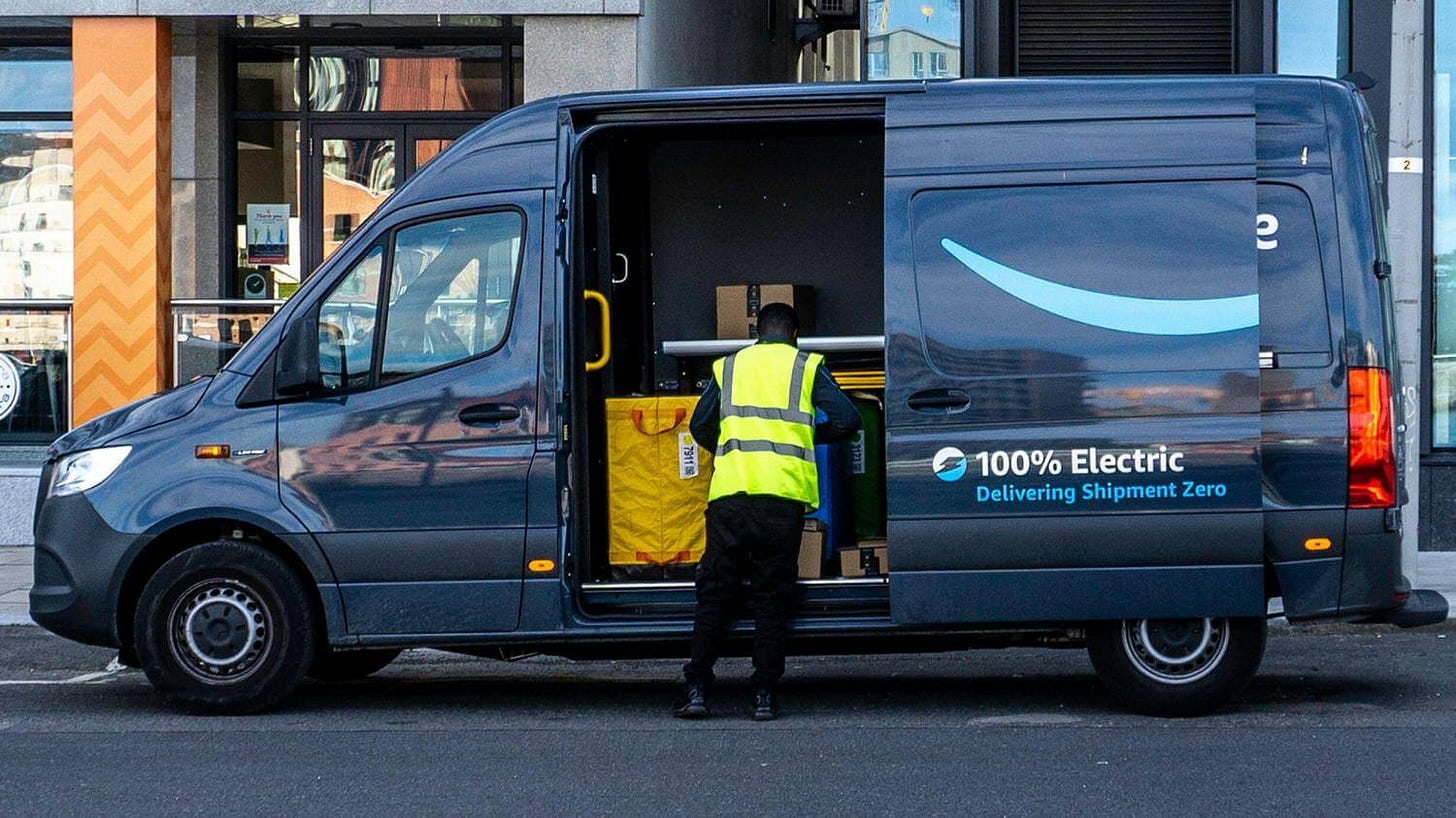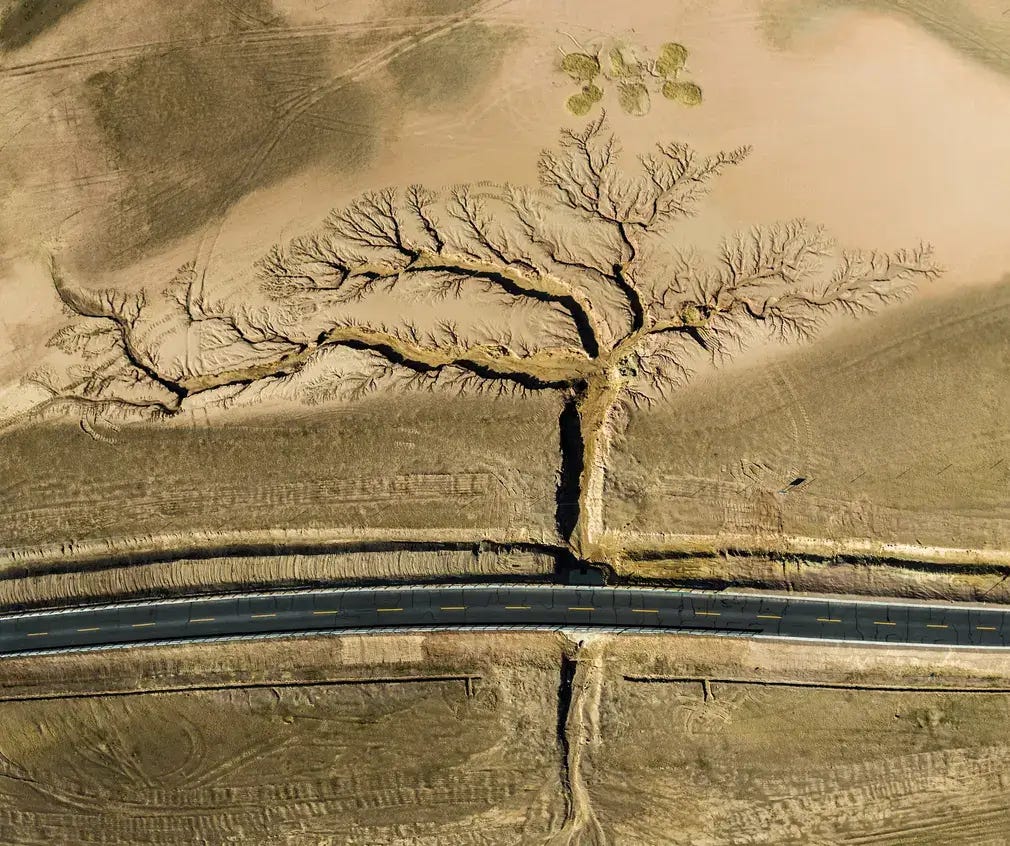🌱 Nature pictures that are a 10/10
The Grumpy Optimists discuss Arla's corporate credentials and why imagining the end of the world feel easier than saving it.
Hello all and happy Monday. 👋
As the nights come quickly, the temperatures fall and the squirrels frantically hide their acorns, we’re very much making our way into Autumn and things can seem somewhat depressing if you’re not a pumpkin-spiced fan. However, we’re here to give you some good news in a week where climate activists took over parts of London, drawing criticism but also getting media attention.
This week we’re digging into what Arla’s payment for environmental targets means more generally as well as looking at some incredible images of nature. Like seriously, they’re already our laptop backgrounds.
Dig in and enjoy!
👀 Articles to read
🇬🇷 Greece runs entirely on renewable energy. For five hours on the 7th of October Greece ran on 100% renewable energy for the first time. This amount of time is not insignificant, showing that using only renewables is possible as generation scales up.
📦 Amazon delivers 700 e-lorries to cut UK pollution. Decarbonising transport is a big challenge, it accounts for around 1/5 of global GHG emissions with emissions from road freight totalling 2.4 billion tonnes of emissions each year. With Amazon investing up to £200 million into low-emission transport and adding thousands of vehicles it can drive innovation and rapid decarbonisation across the transport industry. Now they just need to stop selling so much pointless crap!
🐄 Arla pays farmers more for polluting less. The dairy cooperative has announced that it will pay farmers more for meeting environmental targets. up to 50% of the targets are ‘easy wins’ intended to help farmers be rewarded to take climate action.
🧠 Why it matters. Dairy gets a pretty bad rep for its damage on the climate as well by animal rights activists, rightly so. However, despite the rise and prominence of the trusted oat flat white, dairy milk still accounts for roughly 85% of total milk sales and that doesn’t include cheese, yogurt, butter etc all of which are consumed by billions across the world. Essentially, milk isn’t going anywhere quickly so Arla’s plans come as good news.
However, to us, this presents an interesting shift towards rewarding climate action with one the most powerful tools we have, capital. While it would be nice to think that we should take climate action because it’s the right thing to do, the truth is that for businesses they will be much more likely to take action when it coincides with financial benefits. This signals what hopefully is a wider shift of rewarding low carbon business and means that contracts are not just awarded on price and quality but also climate commitments. Companies like The Chancery Lane Project do a fantastic job of helping businesses put climate clauses into contracts. A powerful market signal
☀️ Project Girona helps residents cut energy bills and usage. A 60-building smart-energy project in Coleraine, Northern Ireland, that uses solar panels and battery storage has resulted in participants saving 55% on their electricity bills and helped cut 40 tonnes of carbon dioxide. The plans show that large-scale solar and battery is a viable option with a payback period of 6-7 years. The success of the project will hopefully result in expanding the project across Northern Ireland. Is mass home solar too much to ask for?
🪱 Carbon Brief highlight the importance of soil in the fight against climate change. Soil stores a whopping 2,000-4,000 bn tonnes of carbon, that’s a lot more than the 120 bn tonnes left in our ‘carbon budget’ to stay under 1.5C. However, scientists have modelled that as temperatures increase, more carbon will be released from soil as microorganisms break it down faster. This could be the start of a significant climate feedback loop that creates more warming. Why does it matter? It shows the importance of protecting our soils and biodiversity to minimise the impact of climate change.
🔥 Why are we so good at painting pictures of climate calamity, while so rubbish at painting pictures of the solutions? Rebecca Tamás explores a wide range of literature and film to illustrate how art, media and journalism have excelled at terrifying us with apocalypses, which can lead to problematic defeatism. Building a more nuanced image of how we can build a better, brighter world in the face of, or avoid, destruction takes a much greater leap of imagination which is crucial if we are to tackle and adapt to climate change. Tamás’ title rings true, Why does imagining the end of the world feel easier than saving it?
📷 Nature be wilding. The 2022 Nature Conservancy photo contest attracts more than 100,000 entries from across the world. The results are insane. Here are two of our favourites.
🎙️ A podcast to check out
This week I (George) listened to the ‘Investment for the people’ episode of Reasons to be Cheerful and found it fascinating. From Norway’s wealth fund to the case for a UK wealth fund and how we can use finance for collective action, the pod is fascinating. A key takeaway, we need a way to help governments get value from assets without having to sell them to private firms to profit. Well worth a listen.
The Grumpy Optimists 💚





